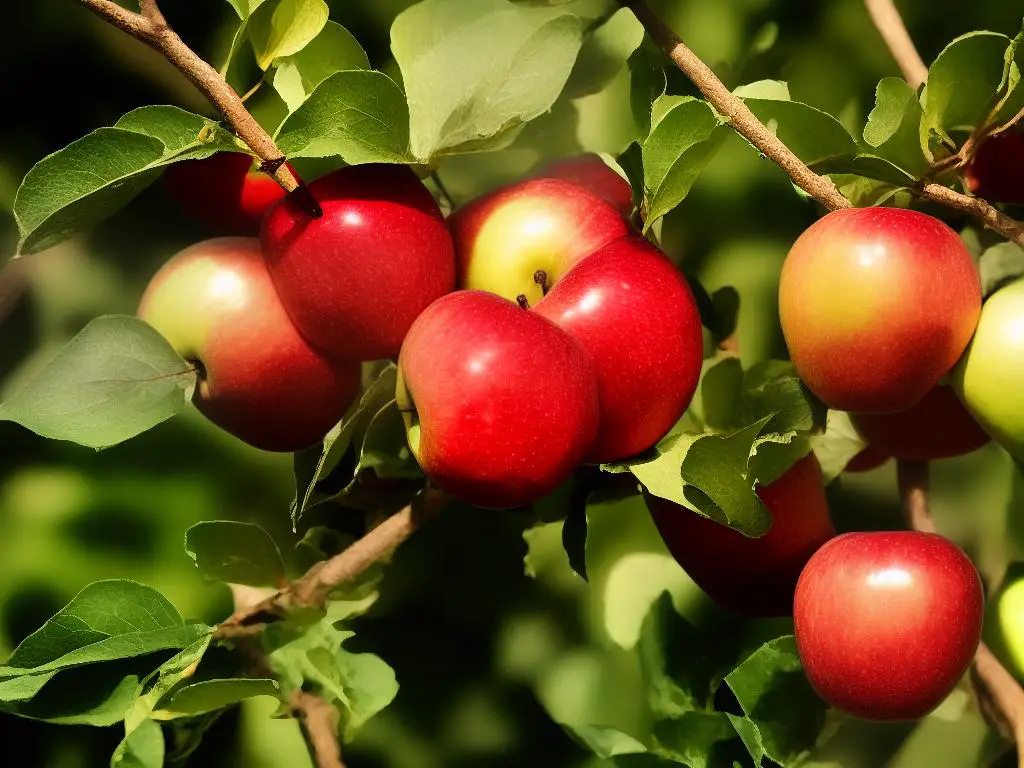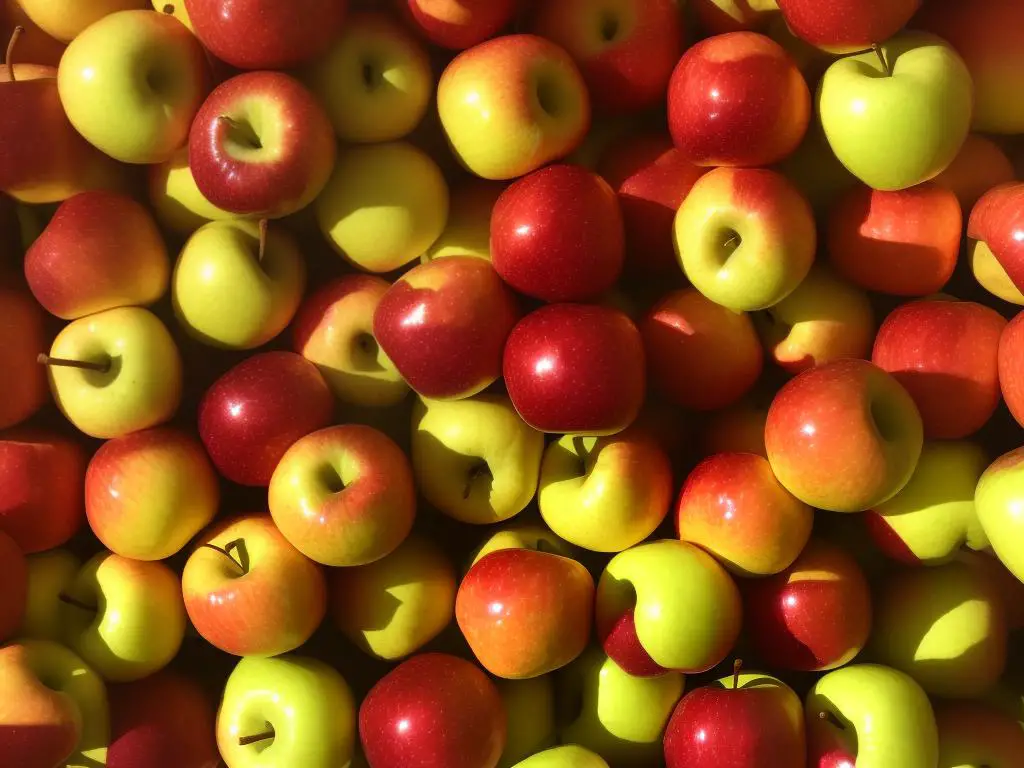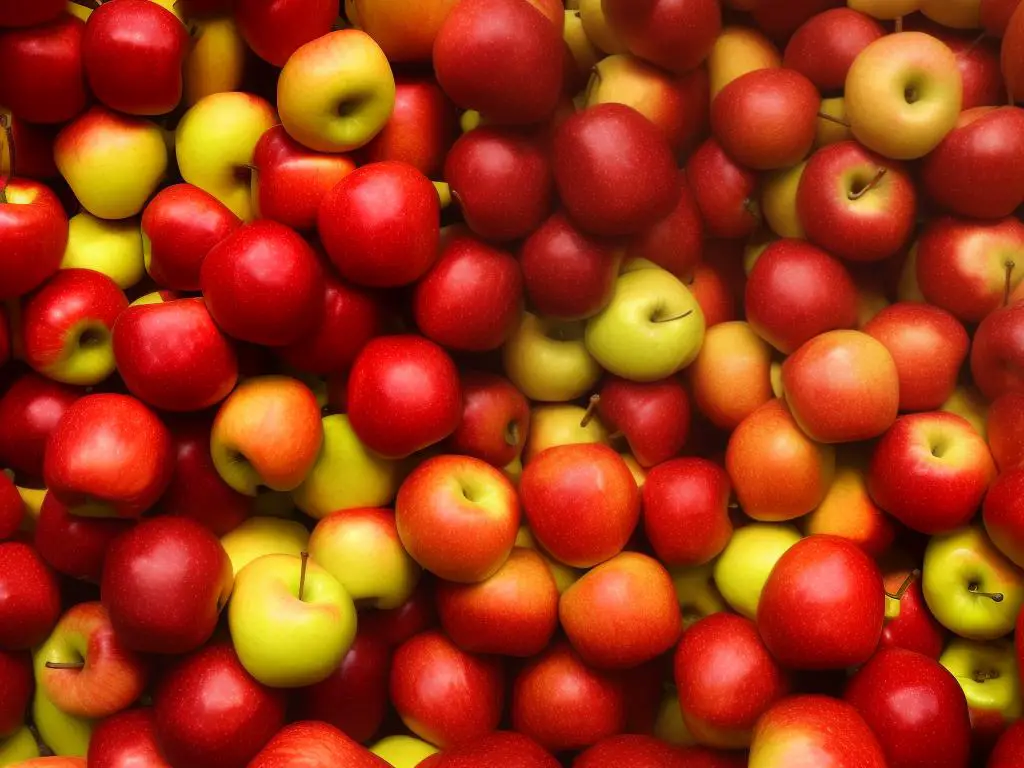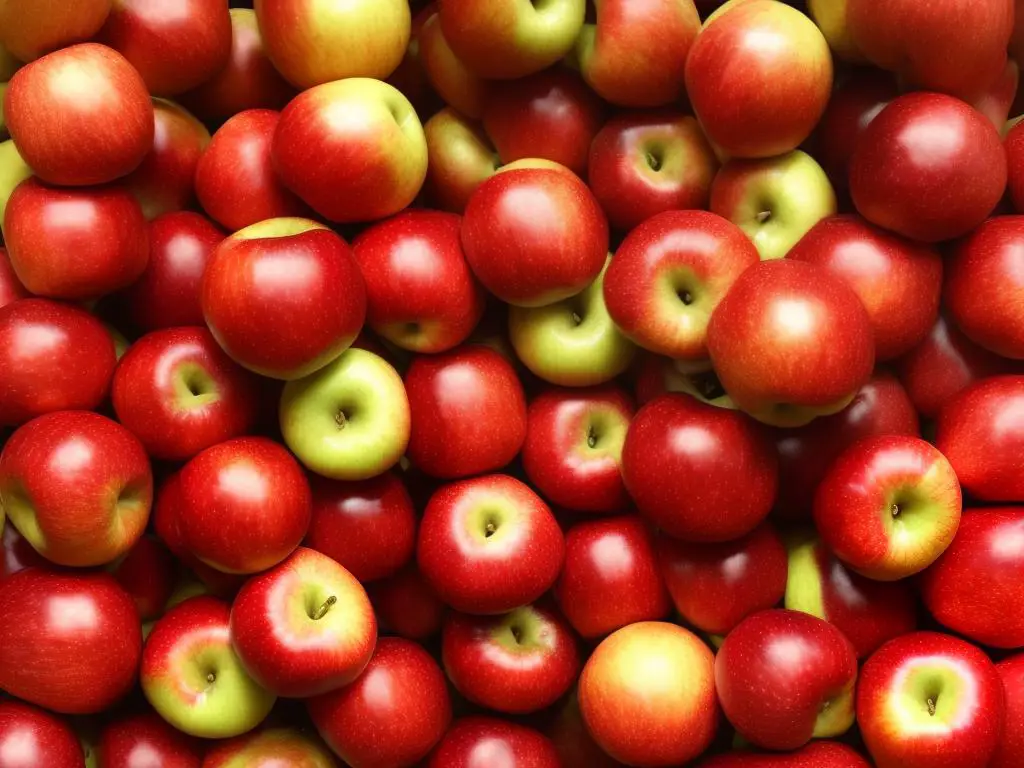Crisp, juicy, and exceptionally flavorful, Pazazz Apples have carved a unique niche in the vast world of apple varieties. This fascinating fruit not only pleases the palate with its unique, tangy-sweet taste but its history and horticulture are equally rich and captivating. It is imperative to explore the distinctive characteristics, cultivation requisites, and consumption methods of this one-of-a-kind apple in order to truly appreciate its remarkable attributes. Whether you’re a food enthusiast, a gardener eyeing a new cultivation challenge, or simply someone who enjoys the delightful crunch of a fresh apple, gaining knowledge about Pazazz Apples will surely enhance your perspective.
History and Origin of Pazazz Apples
Discover the Unique Taste of Pazazz Apples
The world of fruits is filled with countless varieties, but few have made as significant an impact as the Pazazz Apple. Renowned for its distinct, honey-like sweetness, a gentle hint of tartness, and an eye-catching appearance, the Pazazz apple offers the perfect balance of flavor. With its vibrant red skin and captivating yellow backdrop, this apple is ideal for numerous culinary creations.
The Pazazz Apple hails from Minnesota, USA, the heart of apple cultivation. Created by the famous Honeybear Brands, the Pazazz apple descends from the revered Honeycrisp apple, celebrated for its unique sweetness. While its precise lineage remains a closely guarded secret, it is understood to have been meticulously developed through a decade-long process of innovative cross-pollination.
Unlike common apple varieties harvested in the fall, the Pazazz apple grows during the winter months, ripening to perfection in late January and early February, effectively extending the apple season. The cultivation process requires careful hand-thinning to ensure that only the finest apples are produced. This painstaking practice enables the very best fruits to receive more nutrients, thereby enhancing their size, color, and taste profiles.
From its roots in Midwestern America, the appeal of the Pazazz apple has reached global proportions, with successful cultivations in other parts of the United States such as Nova Scotia and Washington. The apple has also seen significant growth in international farms located in New Zealand and Chile, enabling consumers to enjoy this delightful fruit almost all year round.
In essence, Pazazz apples celebrate a harmonious blend of tradition and innovation, encapsulated within its rich history. Its extended growing season differentiates it from other apple varieties, providing a burst of flavor at a time when tastebuds yearn for something fresh. The traditional yet innovative cultivation techniques continue to set a precedent for apple farming worldwide.

The Unique Characteristics of Pazazz Apples
Embrace the Unique Features of Pazazz Apples
Rising from the heartland of North America, the distinctive Pazazz apple is noted for its unique balance of sweetness, a touch of tartness, and an unexpected hint of spiciness. Separating itself from the vast multitude of apple varieties, the Pazazz apple delivers an exciting and refreshing taste experience, filled with delightful surprises.
Appearance
Pazazz apples exhibit a bright red to deep crimson skin, streaked with vibrant yellow undertones. Their skin color contrasts beautifully with their crisp, juicy white flesh within. This vibrant exterior color and interior clarity make the Pazazz apple a visually attractive fruit.
Growing Season
The cultivation of Pazazz apples extends from late fall into the winter, unlike other apple varieties which tend to mature in the summer or early fall. This extended growing season allows Pazazz apples to develop a more complex, robust flavor profile and also gives them a longer availability period.
Best Time to Consume
Consequently, the best time of year to consume Pazazz apples is during the colder months, from December to April. Not only do Pazazz apples offer a burst of flavor during these months when fresh fruit options might be limited, but they also hold up well under various types of cooking.
Nutritional Profile
In terms of nutritional profile, Pazazz apples stand on par with other apple varieties. They’re a good source of dietary fiber and vitamin C. They are also low in calories, making them a healthy snack option.
Unique Storing Abilities
One of the striking features of Pazazz apples is their unique storing abilities. They have been specifically bred to resist bruising and maintain their flavor, texture, and juiciness for a long time, even when stored at room temperature. Some report that Pazazz apples stored in a cool, dark place can remain crisp and tasty for months.
Versatile Culinary Applications
Furthermore, Pazazz apples, due to their unique flavor profile and storing capabilities, have found a place in both raw and cooked culinary applications. They add a refreshing crispness to salads, a sweet-tart flavor to pies and tarts, and a unique twist to savory dishes. Their resistance to browning also makes them ideal for fresh applications like fruit trays and sandwiches.
In Conclusion
The Pazazz apples notably stand out among other apple varieties due to their vivid colors, distinctive flavour, extended growth period, and lasting freshness.

Cultivation Process and Climatic Conditions Favoring Pazazz Apples
Process of Cultivating Pazazz Apples
Pazazz apples, which made their debut just a few years ago, are a hybrid variant of the widely consumed North American Honeycrisp apple. Over a span of more than ten years, Honeybear Brands developed Pazazz apples through natural breeding methods.
The cultivation of Pazazz apples occurs through advanced high-density vertical trellis systems, which ensure that more sunlight reaches an increased number of branches, thereby leading to higher fruit production. Pruning these apple trees before the emergence of first new growth in early spring is a crucial aspect of their cultivation. This practice aids in proper growth, enhances fruit production, and minimizes the risk of diseases by improving airflow around the trees.
Ensuring the apples receive adequate water, especially during periods of drought, is crucial. It’s also important to provide the trees with fertilizer, chiefly nitrogen, which contributes to the overall growth of the tree and is essential for fruit development.
Ideal Soil Conditions and Diseases
For Pazazz apple cultivation, the soil condition is fundamental for tree efficacy. Apples prefer a slightly acidic soil pH range of 6.0 – 7.0. However, Pazazz apples have been found to grow quite well in diverse soil conditions just as long as good drainage is maintained. This precludes the collection of excessive water as it can harm the tree roots and eventually affect the health of the tree which subsequently impacts the fruit quality.
Like any other apple variety, the Pazazz apple is susceptible to diseases such as apple scab, powdery mildew and cedar apple rust. However, growers use Integrated Pest Management (IPM) techniques, strict sanitation protocols, and some necessary organic or synthetic fungicides to manage such diseases and ensure the development of healthy fruits.
What Makes Pazazz Apples Unique
Pazazz apples, famously known as winter apples, flourish in areas with cooler temperatures, ideally below 7 degrees Celsius. These climatic conditions provide Pazazz apples with the necessary chilling phase to transition from dormancy to budding. Their origin can be traced back to Northern America’s apple-growing territories where they thrive in the cooler autumn temperatures. This explains the unique characteristic crunch, juiciness, and distinct flavor of Pazazz apples, a terrific balance between sweetness and tartness.
The surge in popularity has paved the way for Pazazz apple cultivation even in the southern parts of the United States. These areas may lack the typical cool climate, but they do experience periods of chill intermittently.
It is important to highlight that variations in weather and climate play a crucial role in defining the taste and appearance of Pazazz apples. Factors such as sweetness, tartness, firmness, and color are all dependent on the seasonal weather patterns.
Each year, Pazazz apples embody a unique taste profile, a reflection of that season’s growing conditions, making every harvest a unique batch to look forward to.

Best Ways to Consume Pazazz Apples
An Overview of Pazazz Apples
A product of Honeybear Brands, Pazazz apples are a relatively recent addition to the wide variety of apples available today. Their flavor, a perfect blend of sweet and tangy, offers an unparalleled eating experience that leaves a lingering fresh and fulfilling feeling. The aesthetic appeal of Pazazz apples is also unmissable: they are characterized by a radiant red color with hints of yellow. Above all, their texture stands out for being exceptionally juicy and crisp.
Season and Harvesting of Pazazz Apples
Pazazz apples are winter apples, meaning they are harvested later in the season, usually around late fall or early winter. They tend to peak in freshness during the cold months, offering a fresh source of fruit even when other varieties are out of season. Unlike other apple varieties, Pazazz apples continue to ripen even after they’ve been picked, which develops a zestier taste over time.
Nutritional Profile of Pazazz Apples
Pazazz apples are both delicious and healthy. They are low in calories, high in fiber, and packed with essential nutrients. Pazazz apples are also a rich source of vitamin C, which strengthens the body’s immune system and promotes skin health.
Best Ways to Eat Pazazz Apples
Pazazz apples are delectable when simply eaten fresh and raw. Due to their juiciness and crisp texture, they make a satisfying snack. However, there are numerous other ways to enjoy these versatile fruits.
In Salads
Pazazz apples can add a sweet and tangy crunch to salads. Their striking red color also adds aesthetic appeal to the dishes. You can slice them thinly and add them to green salads, chicken salads, or even coleslaws.
In Baking
You can incorporate Pazazz apples into your baked goods for a burst of flavor. Besides traditional apple pies, you can use them in galettes, tarts, crumbles, and muffins. When baked, Pazazz apples retain their delightful mix of sweetness and acidity.
In Cooking
The flavor of Pazazz apples holds up well when cooked, making them an excellent addition to various dishes. They’re a perfect ingredient to sweeten up savory dishes like pork or chicken, or they can be sautéed for a sweet side dish. Try adding them to stir-fries or stews for a unique twist.
In Drinks
Finally, Pazazz apples are also great for beverages. Their robust flavor makes them perfect for fresh juices, ciders, or even cocktails. They can provide an apple twist to your morning smoothie, or add a touch of freshness to your glass of water.

The lasting impression one carries after indulging in a succulent Pazazz Apple is a testament to its unique qualities. Each element that makes up this apple, from its storied origin to its distinct taste and cultivation, contributes to its position as a desirable variety among apple connoisseurs. Recognizing the best recipes and ways to consume it not only allows one to enjoy Pazazz Apples in a varied manner but also integrates this nutritional powerhouse into a healthy diet. The more we understand about Pazazz Apples, the greater our appreciation grows for this wonderful fruit and the orchards that bring it to our reach.
